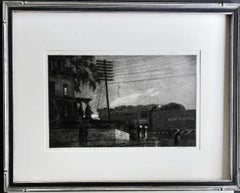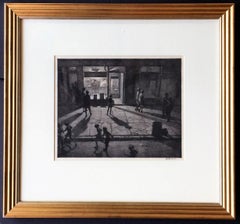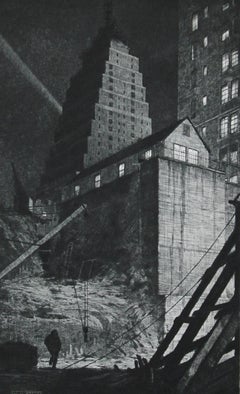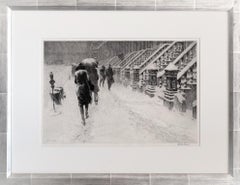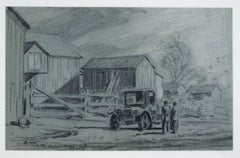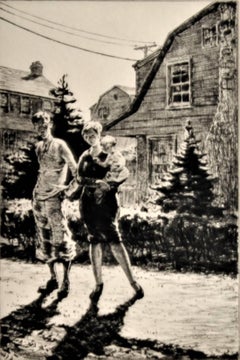Martin Lewis On Sale
1930s American Modern Figurative Prints
Drypoint
1930s American Modern Figurative Prints
Drypoint, Etching
Early 20th Century American Modern Landscape Prints
Drypoint, Etching
1930s American Modern Figurative Prints
Drypoint, Etching
1930s American Modern Landscape Drawings and Watercolors
Chalk, Charcoal
Recent Sales
20th Century American Modern Figurative Prints
Drypoint, Etching
People Also Browsed
20th Century American Modern Figurative Prints
Drypoint, Etching
20th Century American Modern Figurative Prints
Drypoint, Etching
1920s American Modern Landscape Prints
Drypoint, Etching
Early 2000s Contemporary Landscape Prints
Mezzotint
1930s American Modern Figurative Prints
Lithograph
1970s Landscape Prints
Drypoint
Early 20th Century American Modern Landscape Prints
Etching
20th Century American Modern Figurative Prints
Drypoint, Etching
20th Century American Modern Figurative Prints
Drypoint, Etching
1940s American Modern Figurative Prints
Lithograph
19th Century American Modern Portrait Prints
Drypoint, Etching
1960s American Modern Figurative Prints
Paper, Woodcut
1920s American Modern Landscape Prints
Drypoint, Etching
1920s American Modern Landscape Prints
Etching, Aquatint
1930s American Modern Figurative Prints
Lithograph
Early 20th Century American Modern Landscape Prints
Drypoint, Etching
Martin Lewis for sale on 1stDibs
Martin Lewis was born in Castlemaine, Victoria, Australia, on June 7th, 1881. He was the second of eight children and had a passion for drawing.
At the age of 15, Lewis left home and traveled in New South Wales, Australia, and in New Zealand, working as a pothole digger and a merchant seaman. He returned to Sydney and settled into a Bohemian community outside Sydney. Two of his drawings were published in the radical Sydney newspaper, The Bulletin. He studied with Julian Ashton at the Art Society's School in Sydney. Ashton was an English-born Australian artist and teacher known for his support of the Heidelberg School and for his influential art school in Sydney.
In 1900, Lewis left Australia for the United States. His first job was in San Francisco, painting stage decorations for William McKinley's presidential campaign of 1900. By 1909, Lewis was living in New York, where he found work in commercial illustration. His earliest known etching is dated 1915. However, the level of skill in this piece suggests he had been working in the medium for some time previously. It was during this period that he helped Edward Hopper learn the basics of etching.
In 1920, after the breakup of a romance, Lewis traveled to Japan, where for two years he drew and painted and studied Japanese art. The influence of Japanese prints is very evident in Lewis's prints after that period. In 1925, he returned to etching and produced most of his well-known works between 1925 and 1935. Lewis's first solo exhibition in 1929 was successful enough for him to give up commercial work and concentrate entirely on printmaking.
Lewis is most famous for his black and white prints, mostly of night scenes of non-tourist, real-life street scenes of New York City. During the Depression, however, he was forced to leave the city for four years between 1932 and 1936 and move to Newtown, Connecticut. His work from this period includes a number of rural, night-time, and winter landscape scenes in this area.
Lewis returned to Manhattan in 1936 and continued to etch and paint. He taught printmaking at the Art Students League of New York from 1944 until his retirement in 1952. Now he is considered one of the most important American printmakers of the twentieth century.
Find original Martin Lewis prints and other art on 1stDibs.
(Biography provided by Allinson Gallery, Inc.)
Finding the Right Figurative-prints-works-on-paper for You
Bring energy and an array of welcome colors and textures into your space by decorating with figurative fine-art prints and works on paper.
Figurative art stands in contrast to abstract art, which is more expressive than representational. The oldest-known work of figurative art is a figurative painting — specifically, a rock painting of an animal made over 40,000 years ago in Borneo. This remnant of a remote past has long faded, but its depiction of a cattle-like creature in elegant ocher markings endures.
Since then, figurative art has evolved significantly as it continues to represent the world, including a breadth of works on paper, including printmaking. This includes woodcuts, which are a type of relief print with perennial popularity among collectors. The artist carves into a block and applies ink to the raised surface, which is then pressed onto paper. There are also planographic prints, which use metal plates, stones or other flat surfaces as their base. The artist will often draw on the surface with grease crayon and then apply ink to those markings. Lithographs are a common version of planographic prints.
Figurative art printmaking was especially popular during the height of the Pop art movement, and this kind of work can be seen in artist Andy Warhol’s extensive use of photographic silkscreen printing. Everyday objects, logos and scenes were given a unique twist, whether in the style of a comic strip or in the use of neon colors.
Explore an impressive collection of figurative art prints for sale on 1stDibs and read about how to arrange your wall art.
